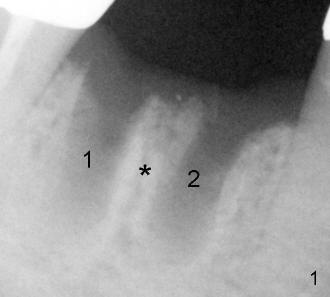
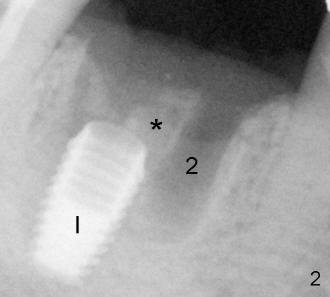
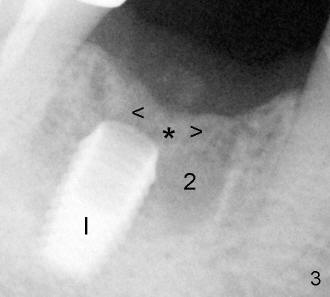
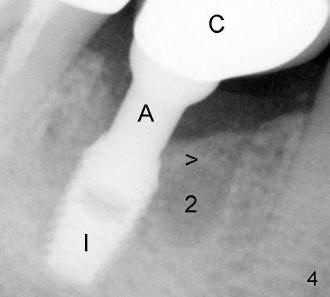
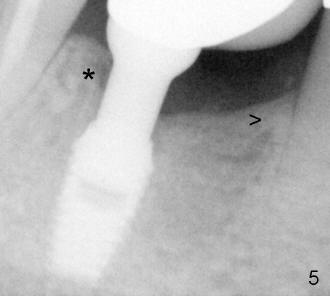
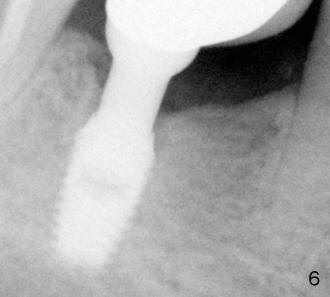
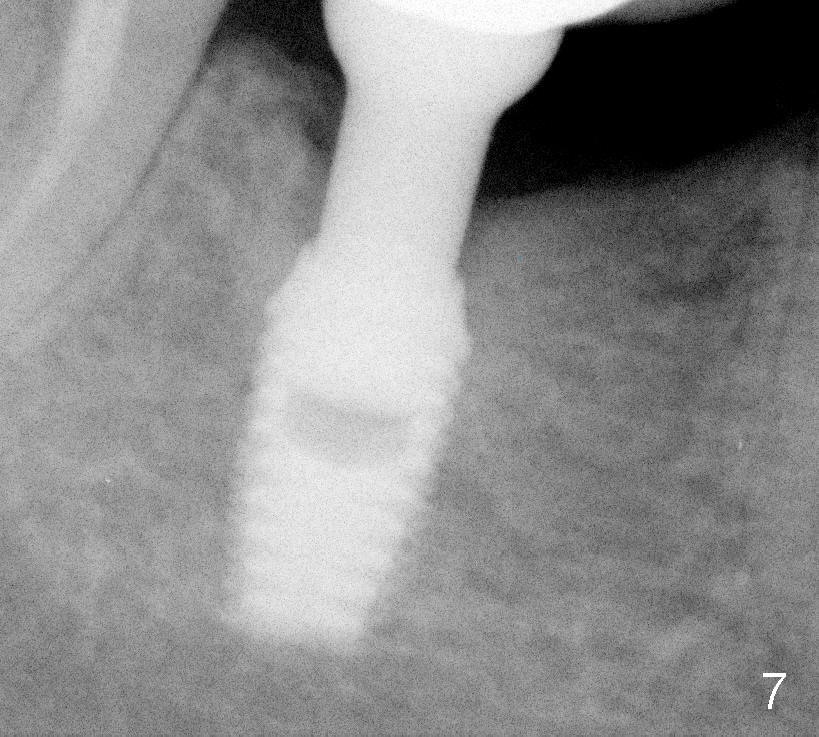
 |
 |
 |
 |
 |
 |
 |
Dental Education Lecture: Osteoporosis
Mrs. Tong is 69 years old and has had pretty severe osteoporosis for a while. She has also taken an anti-osteoporosis medicine, which may cause jaw bone death. Two years ago, she needed an implant for a lower molar without letting us know about history of osteoporosis and the medicine before surgery. X-ray in Fig.1 is taken 2 months after extraction. This tooth has two roots, i.e., two sockets (1, 2) and bone between them (septum, *). The implant (I in Fig.2) is supposed to be placed in the septum, but it drops into the socket #1, which is alright. Four months later, the implant has healed and is ready for crown. The septum seems to disappear (* in Fig.3) and starts to close the openings of sockets 1 and 2 (arrowheads). Density in socket 2 also appears to increase, as compared to Fig.2. One month later, Mrs. Tong gets a crown (C in Fig.4). Between the crown and implant (I) is abutment (A). From that moment on, she restarts to enjoy her normal eating. Another 9 months later, the density on the top of socket #1 increases (* in Fig.5, compare to the same area in Fig.4). The opening of socket 2 has completely closed (> in Fig.5), as compared to Fig.4. Density in socket 2 also continues to enhance. One and three years later, bone continues to grow denser (whiter in x-ray) all around the implant (Fig.6,7). The bone has distinct patterns. All is due to normal chewing. It appears that our jaw bone is young forever if we have teeth or implants. If we could keep exercising normally as we age, we would never get osteoporosis in the other parts of our body. Osteoporosis does not affect implant at all. On the other hand, implant can improve osteoporosis at least in the jaw bone.
Xin Wei, DDS, PhD, MS 1st edition 04/10/2011, last revision 05/19/2018